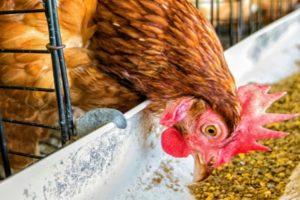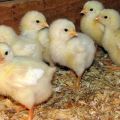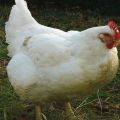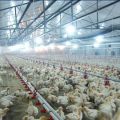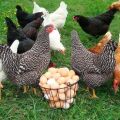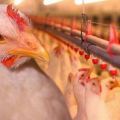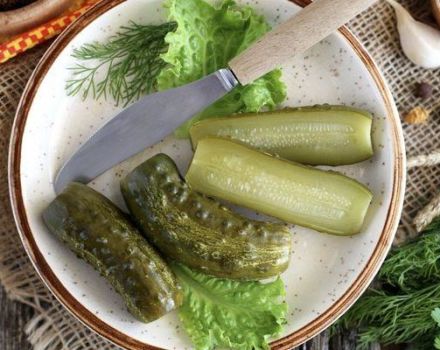The composition and rules for the use of premixes for chickens, types and best brands of mixtures
Every farmer knows that the health and productivity of birds depends on the quality of their nutrition. Feed - both for layers and for broiler chicks - must be balanced and contain an optimal set of nutrients. The best way to enrich your feed with vitamins and minerals is with chicken premixes. But in order not to harm the birds, the dosage indicated in the instructions should be observed.
What are premixes and what are they for?
The diet of chickens is about 70% based on cereal grains, so it must be enriched with vitamins, minerals, enzymes, amino acids. It is difficult to add these substances in free form to feed because of their low concentration. The best option is to use premixes.
Premix is a homogeneous mass that includes bioactive substances combined in a filler. An additive in the diet is needed for:
- improving metabolism in chickens;
- normalization of the assimilation of feed in the digestive tract;
- full development and functioning of internal organs;
- increasing egg production and hatchability of chickens;
- reducing the likelihood of bone and joint pathologies;
- prevention of baldness and intraspecific cannibalism;
- maintaining immunity during molting;
- decrease in susceptibility to infectious pathologies.

Advantages and disadvantages
Positive aspects of premixing hens:
- increased fertility (up to 280 eggs per year);
- reducing the cost of purchasing feed (premixes have a high nutritional value);
- increasing the nutritional value of eggs;
- maintaining normal reproductive capacity of chickens;
- improving the presentation of eggs.
Benefits of broiler feeding:
- significant annual weight gain;
- shortening the feeding period;
- prevention of skeletal pathologies in young animals.
There are few disadvantages to using premixes, but poultry farmers consider them significant. It:
- relatively high cost;
- the need for a careful calculation of the dosage (overfeeding is harmful);
- difficulty in choosing a quality product (many fakes);
- the same type of composition (chickens, accustomed to food diversity, often refuse to feed).
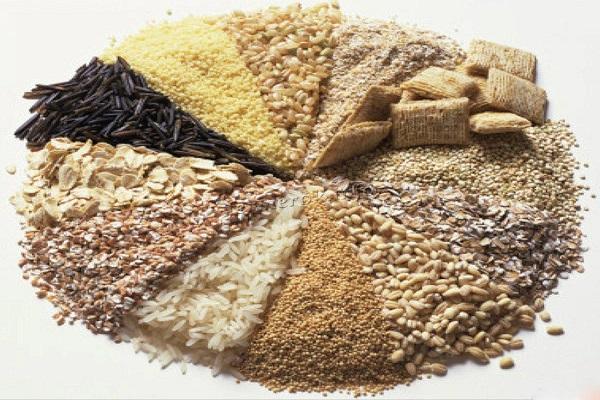
Types of additives
Manufacturers are constantly working to improve the composition of premixes. Today, the following types of additives are sold in composition:
- Vitamin - to eliminate hypovitaminosis in chickens during the winter months.
- Mineral - includes minerals important for the proper functioning of the digestive system, egg shell formation.
- Complex - a combination of vitamins and minerals.
- Therapeutic - are intended to eliminate and prevent pathologies of chickens.
- Protein - complement carbohydrate foods.
What should be included?
Premixes differ in use for chickens for different purposes and age categories. Preparations for laying hens, broilers, weekly chickens, young chickens, meat breeds are produced.

For hens
An additive intended for laying hens must include:
- vitamin E (essential for the formation of egg white);
- group B (to maintain the health of the nervous system);
- selenium (to improve the functioning of the reproductive organs);
- iodine (to maintain the hormonal system);
- copper (for the full formation of the chick in the egg);
- amino acids lysine and methionine.
For broilers
The premix for broilers must include:
- vitamin A (for active growth);
- D (for skeletal development);
- group B (to normalize digestion and metabolism);
- zinc (to support heart function);
- iron (to prevent anemia);
- manganese (to prevent pathologies of the joints of the legs).
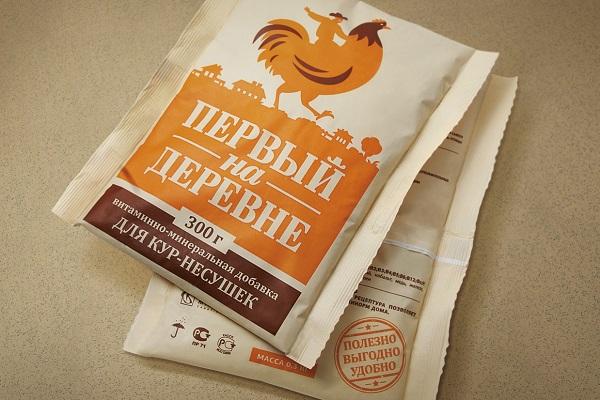
How to choose a quality product?
The quality of the premix is determined by its composition, written on the package:
- If there are no components of animal origin in the composition, then amino acids must be contained.
- A quality product contains antioxidants that prevent the oxidation of vitamins.
- Of the vitamins, A, E, D, K, group B must be present.
- The mineral composition should include zinc, selenium, copper, manganese, iron, calcium, phosphorus. It is advisable that the sources of minerals are natural ingredients.
The quality of the product decreases over time.
Vitamins and minerals are quickly destroyed, therefore, after the expiration date, the drug is useless to use.
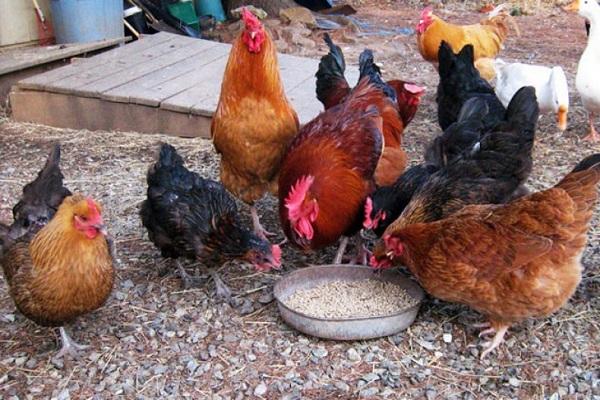
The best brands and manufacturers
A large number of domestic and imported premixes for chickens are sold. They practically do not differ in composition, but the difference in price can be significant.
Ryabushka, LLC "Agrovit"
One of the most popular domestic brands. It contains 12 vitamins, 7 minerals. No hormones. The product is suitable not only for chickens, but also for other types of poultry, helps prevent premature molting, cannibalism, rickets, and degenerative changes.
Zdravur Laying hen
It contains 11 vitamins, 7 minerals, enzymes, amino acids, no GMOs. The product normalizes digestion, promotes the full development of birds, increases the fertility of layers.
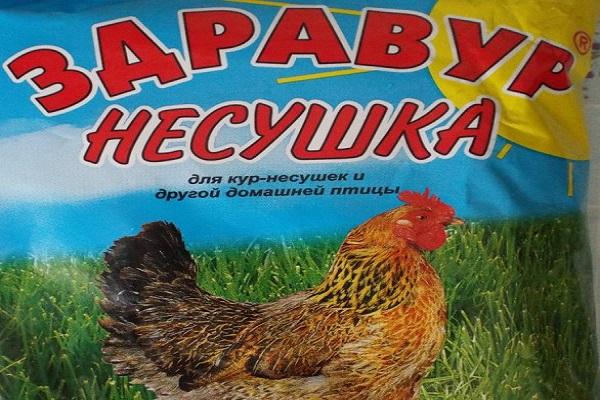
TechKorm, Trouw Nutrition International
Imported feed is based on 8 vitamins, contains calcium and phosphorus, methionine, lysine, choline, crude protein. The best option for large poultry farms. The product promotes rapid weight gain in broilers, normalizes digestion, and increases hatchability of chickens.
Rural courtyard
It is intended for feeding meat chickens and broilers, promotes active weight gain, and also prevents anemia, hypovitaminosis, cannibalism, rickets, eye and hormonal pathologies.
The components are selected taking into account the metabolism in the bird's body, so the premix allows you to reduce the amount of feed consumed and save money.

Megamix
The premix can be used both in large farms and in private farmsteads. Improves overall health of chickens, promotes rapid body weight growth, increases the number of surviving chicks. It contains 12 vitamins, important nutrients, mineral springs (limestone, diatomite).
How to feed chickens with premix correctly?
The feeding instructions are written on the premix packs. The standard daily amount is 0.5 or 1% of the weight of the feed consumed per day (5 or 10 g per 1 kg of feed mass).
Egg direction
The premix is added to the feed at the rate of 0.5-1 grams per hen. But most manufacturers have a recommended additive to feed ratio of 1 to 100.
Meat direction
The dose of the drug is calculated based on the total daily feed volume. For most manufacturers, the recommended amount of premix is 1% of the food weight (10 g of the drug is consumed per 1 kg of feed).
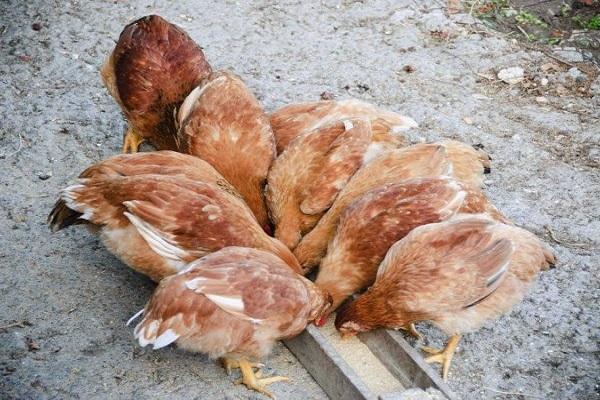
DIY premix
You can make your own nutritional supplements, but they will not work as well as store-bought products. The ingredients are used:
- shell rock - a source of calcium and iodine (about 8% of the feed mass);
- a mixture of limestone, chalk, eggshell - to replenish calcium, iron (1-3%);
- sprouts of cereals (up to 30%);
- greens - clover, root vegetable leaves, nettle (1-3%);
- edible salt - a source of chlorine, sodium (no more than 2 g per individual per day).
Using premixes, the farmer not only provides the chickens with the necessary nutrients, but also saves on feed. With such a diet, birds remain healthy and active, their susceptibility to infectious diseases decreases, and productivity increases.

